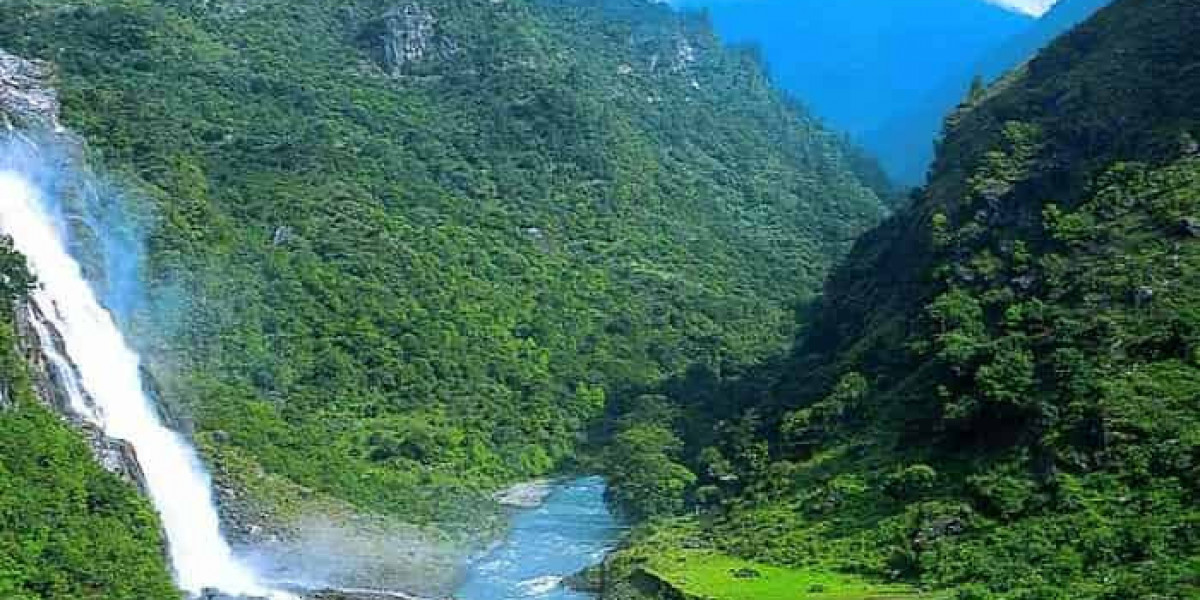Tuensang, one of the largest and most culturally rich districts in Nagaland, holds a significant place in the history of Northeast India. Known for its vibrant tribal heritage, breathtaking landscapes, and deep-rooted traditions, Tuensang offers a unique blend of history, culture, and adventure. This blog delves into the fascinating history of Tuensang, exploring its evolution, tribal significance, and the role it plays in modern-day Tuensang tourism.
The Historical Significance of Tuensang
Tuensang has been home to various indigenous Naga tribes for centuries. The district is known for its association with the Chang, Sangtam, Khiamniungan, and Yimkhiung tribes , each contributing to its rich cultural heritage. Historically, Tuensang was an independent tribal region with self-governing communities, ruled by village chiefs and elders.
During the British colonial period, Tuensang remained largely untouched by outside influences due to its remote location and strong tribal identity. However, post-independence, it became an essential part of Nagaland , significantly contributing to the state's political and cultural landscape.
Tuensang's Role in Nagaland's Formation
Before 1957, Tuensang was an independent administrative unit known as the Tuensang Frontier Division .
In 1963, when Nagaland became the 16th state of India , Tuensang was one of the major districts included in the newly formed state.
It played a crucial role in shaping Nagaland's identity, preserving traditional Naga customs and governance.
Places to Visit in Tuensang
Tuensang is not just a historical hub but also a scenic paradise filled with mesmerizing landscapes, ancient temples, and vibrant tribal villages. Here are some of the must-visit places:
1. Tsadang Village
One of the oldest settlements, showing traditional Naga architecture .
Known for its rich tribal folklore and handwoven textiles.
2. Noklak Village
Famous for its skilled craftsmen and intricate bamboo artifacts.
Offers a glimpse into the lives of the Khiamniungan tribe .
3. Changsangmongko Village
A historical site believed to be the origin of the Chang tribe .
Home to ancient stone monoliths and traditional community houses.
4. Longtrok
An archaeological site where ancient rock carvings are found.
Believed to be sacred, with strong tribal and historical significance.
5. Khiamniungan Tribal Museum
A must-visit for those interested in learning about Naga tribal history .
Showcases traditional weapons, costumes, and ancient manuscripts.
Famous Temples in Tuensang
While Tuensang is primarily known for its tribal heritage, it also has religious sites that reflect the spiritual diversity of the region.
Shiva Temple: A small but revered temple dedicated to Lord Shiva , attracting Hindu pilgrims.
Local Baptist Churches: Reflecting the Christian influence in the region, these churches play an essential role in the community's religious life.
Things to Do in Tuensang
Visiting Tuensang is an experience filled with culture, adventure, and local flavors. Here are some top activities:
1. Explore Tribal Villages
Witness the age-old customs, festivals, and lifestyle of Naga tribes .
Interact with locals to understand their traditional governance systems.
2. Trekking and Adventure
The region offers scenic trekking trails through dense forests and hills .
Explore hidden waterfalls and remote tribal settlements.
3. Experience Local Festivals
Attend vibrant festivals like Naknyulem and Tsokum , which showcase traditional dances, music, and sports.
Enjoy local feasts prepared during these celebrations.
4. Try Tuensang Local Cuisine
Tuensang offers a variety of Naga delicacies that reflect its tribal heritage.
Smoked Pork: A staple dish, often cooked with bamboo shoots.
Axone (Fermented Soybean): A unique ingredient used in traditional dishes.
Rice Beer: A popular homemade brew served during festivities.
Tuensang Weather and Best Time to Visit Tuensang
Tuensang has a pleasant climate throughout the year, making it an excellent destination for travelers.
Summer (March to June): Mild temperatures, ideal for trekking and sightseeing.
Monsoon (July to September): Heavy rainfall, making travel challenging.
Winter (October to February): Best time to visit Tuensang, with cool and refreshing weather, perfect for exploring tribal villages and cultural sites.
How to Reach Tuensang
Tuensang is well-connected to major cities in Nagaland, making travel convenient.
By Air:
The nearest airport is Dimapur Airport (300 km away) .
From Dimapur, travelers can take a taxi or bus to Tuensang.
By Train:
The nearest railway station is in Dimapur , connected to Guwahati and other major cities.
From Dimapur, one can hire a taxi or take a bus.
By Road:
Tuensang is connected via National Highway 202 , making road travel easy.
State-run and private buses operate regularly from Kohima and Dimapur.
Tuensang's Modern Significance
In recent years, Tuensang tourism has gained popularity due to its untouched natural beauty and rich tribal culture. The government and local communities are making efforts to preserve its heritage while promoting sustainable tourism.
Eco-Tourism Initiatives: Encouraging travelers to explore Tuensang's natural landscapes responsibly.
Cultural Tourism: Showcasing traditional arts, crafts, and tribal festivals to visitors.
Conclusion
Tuensang is more than just a historical district; it is a living testament to Nagaland's deep-rooted traditions and indigenous heritage. Whether you are a history enthusiast, an adventure seeker, or someone looking to experience authentic tribal culture, Tuensang offers an unforgettable journey. Plan your trip with Adotrip and explore the hidden gems of Tuensang tourism .
FAQs About History of Tuensang
1. What is Tuensang famous for?
Tuensang is famous for its rich tribal culture, scenic landscapes, and historical villages, making it a prominent tourist destination in Nagaland.
2. What is the best time to visit Tuensang?
The best time to visit Tuensang is from October to February, when the weather is pleasant for sightseeing and exploring.
3. How can I reach Tuensang?
Tuensang can be reached via Dimapur Airport (300 km away), Dimapur Railway Station, and well-connected roads from Kohima and Dimapur.
4. What are the must-try local dishes in Tuensang?
Some must-try dishes include smoked pork, axone (fermented soybean), bamboo shoot curry, and traditional rice beer.
5. Are there any trekking opportunities in Tuensang?
Yes, Tuensang offers excellent trekking trails through hills, forests, and remote villages, providing breathtaking views and cultural experiences.







